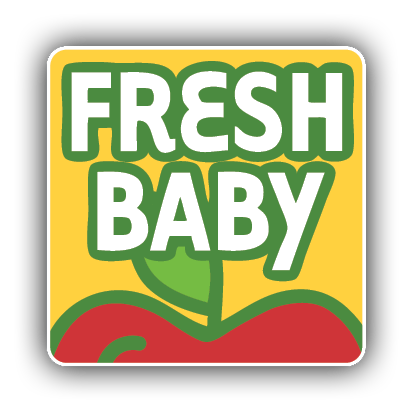
August is best known for bringing bell peppers, peas, radishes, summer squash, blackberries, cantaloupe, grapes, honeydew, kiwi, plums and raspberries into season.
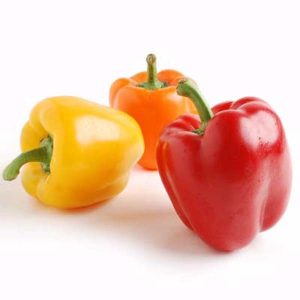
Bell peppers
Bell peppers are fat free, cholesterol free, sodium free, high in vitamin c, and are a good source of vitamin A and beta-carotene, which is essential for eye and skin health.
These awesome vegetables come in red, orange, yellow and green and their flavors vary, with orange and yellow as the sweetest. A red pepper is actually a mature green pepper! As the pepper ages, they become milder in flavor, and sweeter.
Try eating these raw as a snack with your favorite hummus, or adding to salads. They are also delicious cooked in a variety of dishes.

Peas
Green garden peas (a.k.a. English peas and Sweet peas) are a valuable source of protein, iron and fiber. Fiber helps to reduce cholesterol thus reducing the risk of heart disease and stroke. Sugar snap peas and snow peas, contain much less protein, but they are an excellent source of iron and vitamin C that work to keep your immune system functioning properly.
Read more about peas here and try our recipe for Macaroni and Peas
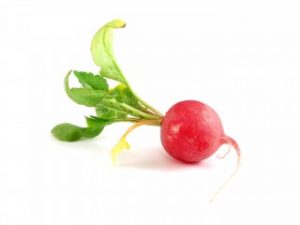
Radishes
Radishes are low in calories and are a good source of potassium, vitamin C, folate and fiber. They are also fat free, cholesterol free and low in sodium.
To pick radishes, make sure red and the tops are green. They can be refrigerated for up to a week in a plastic bag, but make sure to take the tops off before storing.

Summer squash
Zucchini and yellow squash are the two summer squashes. They can both be eaten raw, which is a nice cool, summer treat. Squash is a good source of beta-carotene, great for eyes, skin and some research shows, cancer prevention. They are also a good source of vitamin C and B6 and fiber, are low in calories and are fat, cholesterol and sodium free.
When buying squash, make sure it is firm, heavy and shiny. Leave behind those with brown spots or bruising. When grilling, steaming, sautéing or baking, cook until just tender.
Store in the refrigerator for up to five days in a plastic bag and wash before use. Cooked squash can be stored for two days.

Blackberries
A tasty way to add fiber and vitamin C to your diet, blackberries are delicious in
salads, sauces and backed goods. Pick blackberries in season and freeze for an off-season treat. They are low fat, cholesterol and sodium free and are a great source of vitamin C and fiber. They can be stored in the refrigerator for up to six days. Do not wash them until ready to eat.
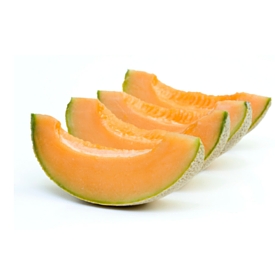
Cantaloupe
The cantaloupe is 95 percent water, and all that sweetness comes from the other 5 percent of the fruit. Cantaloupes are a low calorie, highly nutritious, nearly no fat treat. One-fourth of a medium sized cantaloupe provides 80% of the recommended daily allowance for both vitamins A and C. Cantaloupes also contain some iron, calcium, fiber and protein.
Try our Out of This Galaxy Toddler Treat and Awesome Fruit Salsa
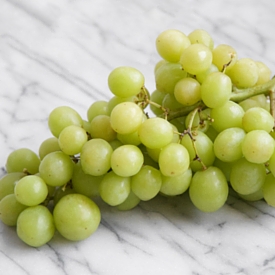
Grapes
Grapes are a good source of fiber, are sodium, fat and cholesterol free and are high in vitamin C and potassium. Research has also shown that all colors of grapes are sources of antioxidants, which are believed to improve the function and health of our cells.
Store in the refrigerator for one week.
Try our Waldorf Salad
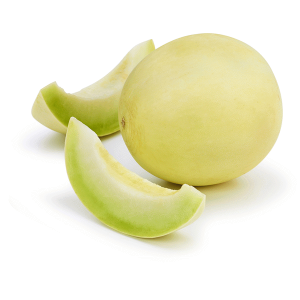
Honeydew
These delicious green melons are low in calories and sodium, are fat and cholesterol free and a good source of vitamins A and C and potassium.
Pick honeydew melons when they are ripe. Make sure the shape is symmetrical, and the melon is fee of cracks, bruises or soft spots. Smelling the melon for a sweet aroma is not an absolute in determining if it is ripe.
To make a honeydew melon juicier, let it sit at room temperature for two or three days, then cut and store in a plastic bag in the refrigerator. It should be used within a few days.
Multi-Melon Salad
A perfect side dish with grilled fish, pork or chicken. Mix equal parts, cantaloupe, honeydew and watermelon cubes in a bowl. Toss with raspberry vinaigrette. Sprinkle with blanched almonds, shredded coconut and dried cherries.
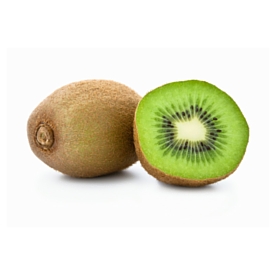
Kiwi
Kiwis contain more vitamin C than 2 oranges, more potassium than a banana, more vitamin E than an avocado, more fiber than an apple and they are a good source of folate. In addition, they contain copper and magnesium, two minerals that are tough to get in your diet. Copper is vital to children as it aids in bone strength, brain development, and building immunity. Magnesium helps in bone formation, heart rhythm regulation, muscle relaxation and nerve function.
Read more kiwi tips and recipes here.

Plums
Plums are fat, sodium and cholesterol free and are a good source of vitamin C. Plums and prunes (dried plums) are loaded with anti-oxidants and vitamins that help keep eyes, skin and organs healthy. Plums and prunes make a nutritious, low calorie snack on their own, or combine them with yogurt and cereal for a nutritious meal.
When choosing plums, make sure they are plump. Store in a brown paper bag until ripe and then in the refrigerator.

Raspberries
Raspberries may be red, black, yellow, or purple. When they are ripe, they are large, shiny and uniform in color. All colors of raspberries are good sources of vitamin C and also contain fiber, folate, and vitamin K. They are also full of phytochemicals and antioxidants, which help reduce the risk of chronic diseases and cancer, research shows.
Ways to enjoy raspberries:
– Puree raspberries, sieve out seeds, and use as a melba sauce over peaches, ice cream, or frozen yogurt.
– Add fresh berries and a few nuts to cereals and yogurts.
– Mix raspberries into a salad, and top with Balsamic dressing.


